For over 400 years, Alcaudete changed hands many times. It was in constant peril of being taken or retaken by the Muslims of al-Andalus or the Christian Kingdom of Castile. Not surprising then that its castle is a formidable fortress.
By Nick Nutter | Updated 8 Sep 2022 | Jaén | Villages |
Login to add to YOUR Favourites or Read Later
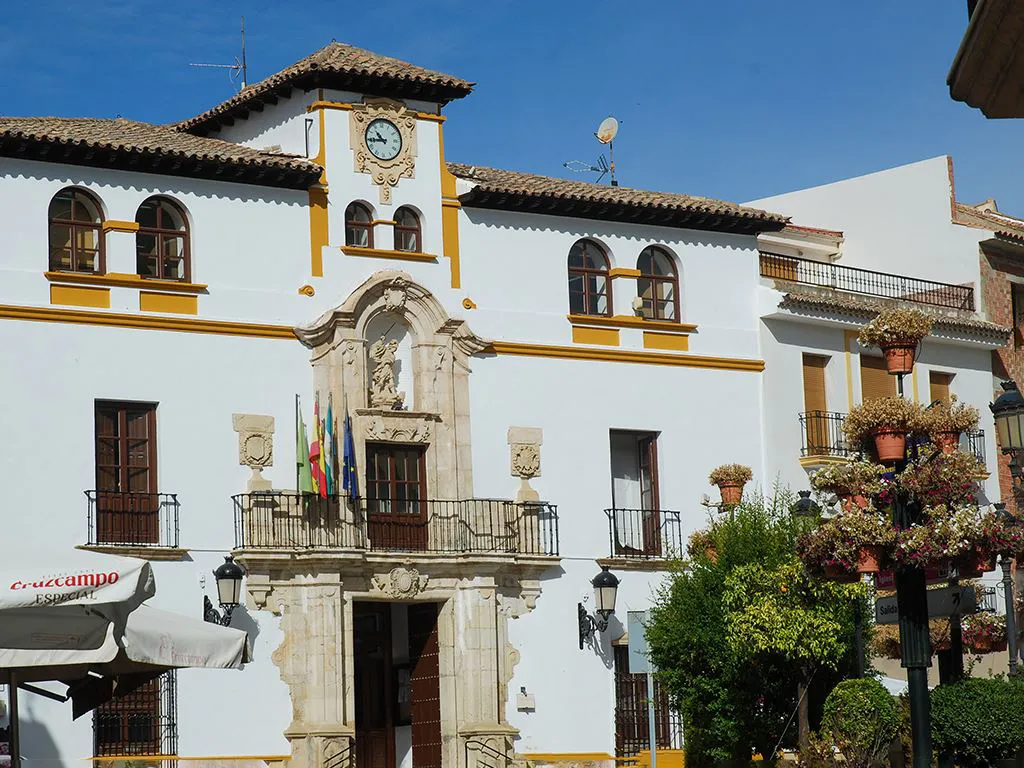
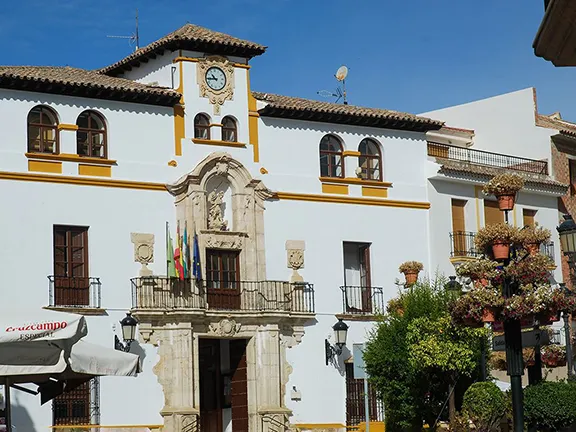
Alcaudete Ayuntamiento
Alcaudete has been a prized possession since the Muslims arrived in the 8th century AD. As you approach the town, down the N432 from Granada, you are following a natural pass through the Sierra Sur that connects Granada with the wide, fertile valley of the Rio Guadalquivir and Cordoba. The pass was created by the Rio Guadajoz that flowed out of the Sierra and into the Guadalquivir. Alcaudete is at the mouth of that valley with its castle perched on a prominent hill, a natural focus for traders, travellers and armies.
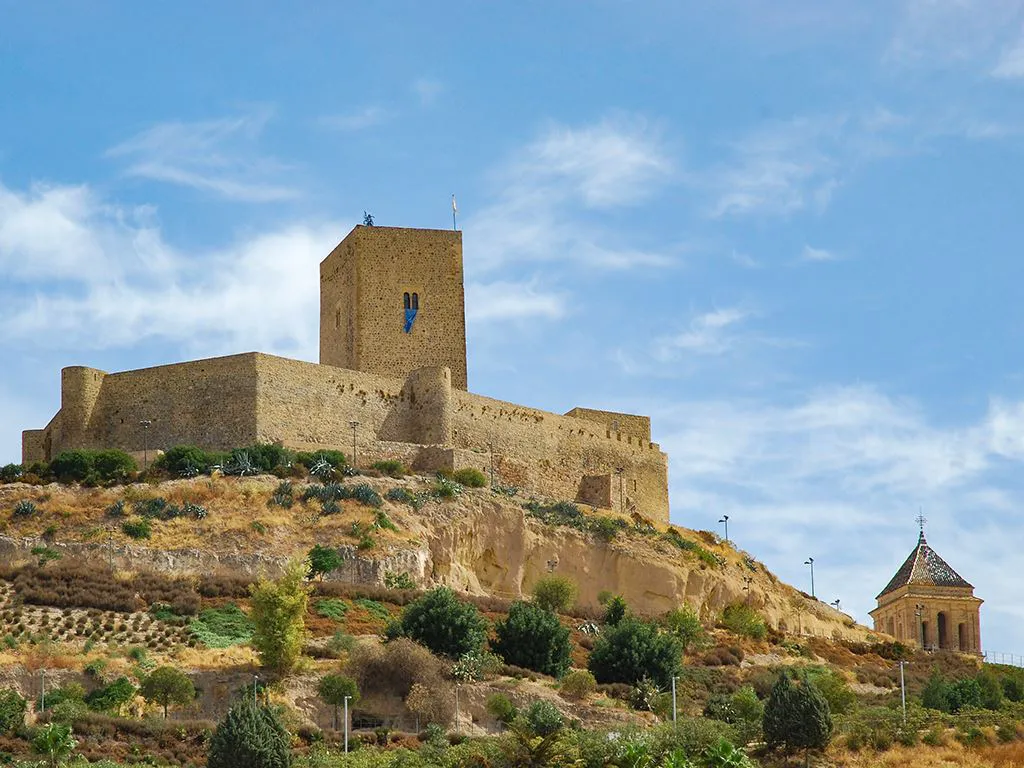
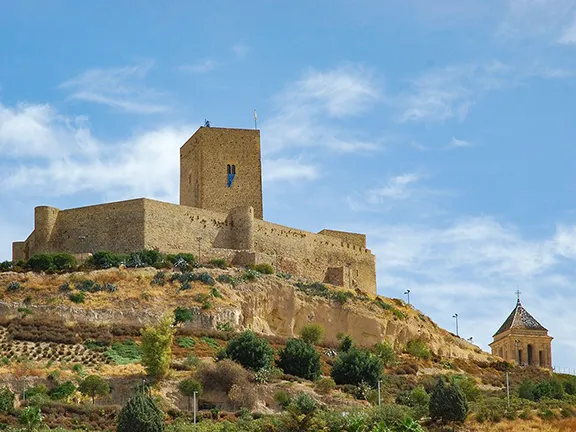
Castillo de Alcaudete
Construction of the Alcazaba, the central fortress and walls protecting the town, began soon after the Muslim occupation. By the 12th century, Muslim historian Muhammad al-Idrisi was able to write, 'Alcaudete is an impressive fortress, built at the foot of a mountain facing the west, where there is a highly visited market'.
After the castle finally fell into Christian hands, it was passed to the adjudication of the Order of Calatrava in 1340. The castle is sometimes now known as the Castle of Calatrava.
So prized was the town, and so often did it change hands that, until the reconquest in 1492, the population felt safer within the walls of the castle.
The town that surrounds the fortress mound like a lacy petticoat only grew after the 15th century.
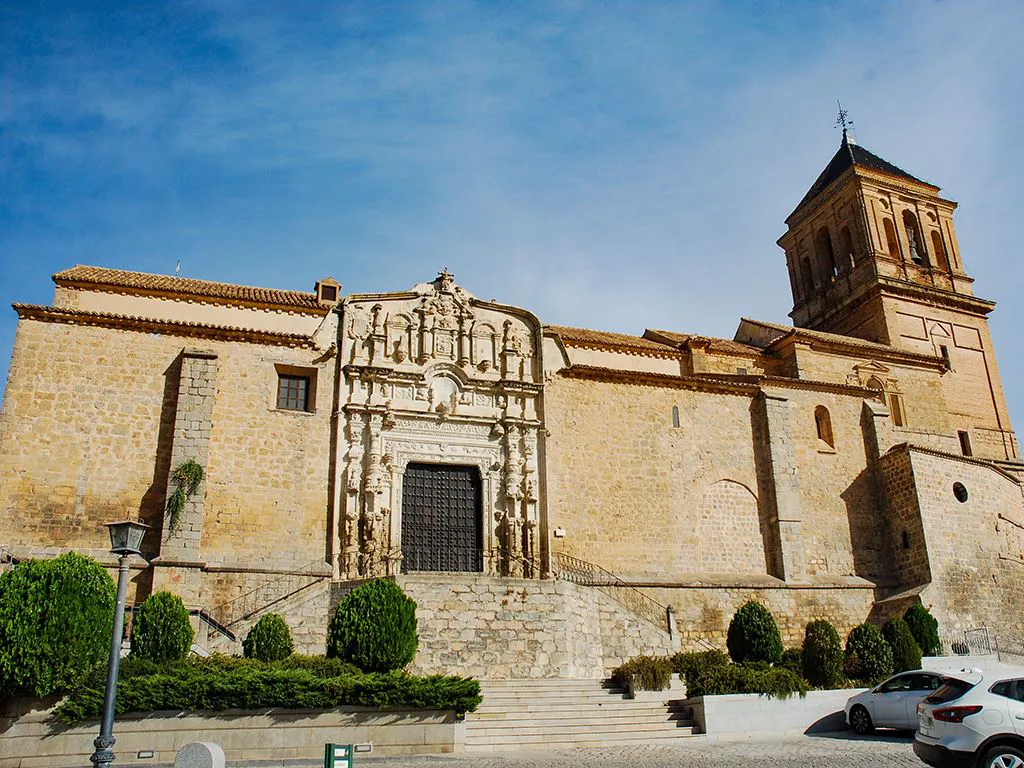
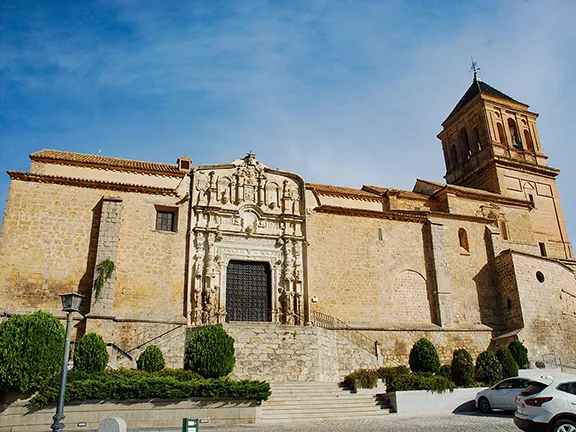
Iglesia de Santa Maria la Mayor
Only slightly less prominent than the castle, and built just below it, is the Iglesia de Santa Maria la Mayor. It is built on the site of a mosque that was originally within the outer walls of the Muslim Alcazaba. Construction started in the early 16th century and the Gothic style ribbed vaults fashionable at that time can be seen in the chapel and three naves. Marian and Renaissance elements can be seen in the main body of the chapel that was built in the later part of the century including the sculptured surround of the main door. The bell tower was added in the 17th century.
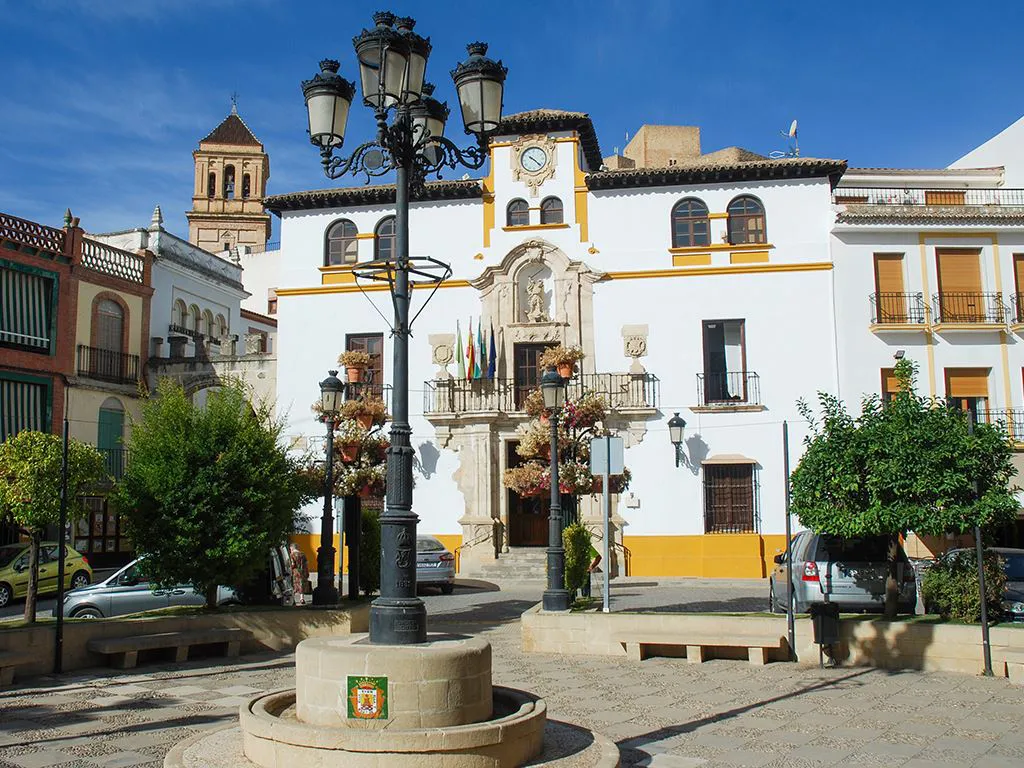
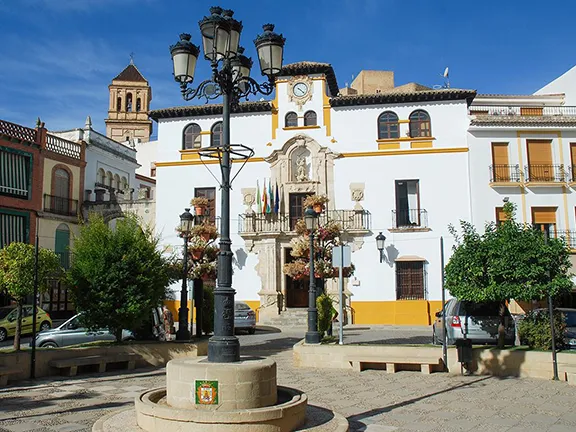
Plaza Veintiocho de Febrero
By the 18th century, Alcaudete had expanded enough to be worthy of a town hall or Ayuntamiento. This Baroque style building, built in 1744, is at the head of a small square called Plaza Veintiocho de Febrero. The plaza is the social centre of the town with a couple of café bars.
To one side of the Plaza Veintiocho de Febrero is what was the magnificent 18th century Ermita de Nuestra Señora de la Aurora. The hermitage was expropriated in the 19th century, a victim of the ‘Spanish Confiscation’: a government initiative, that started in the late 18th century and continued until 1924, to expropriate land and wealth held by the Catholic church to pay off the national debt. The building was converted into a casino, bar and theatre in 1931.
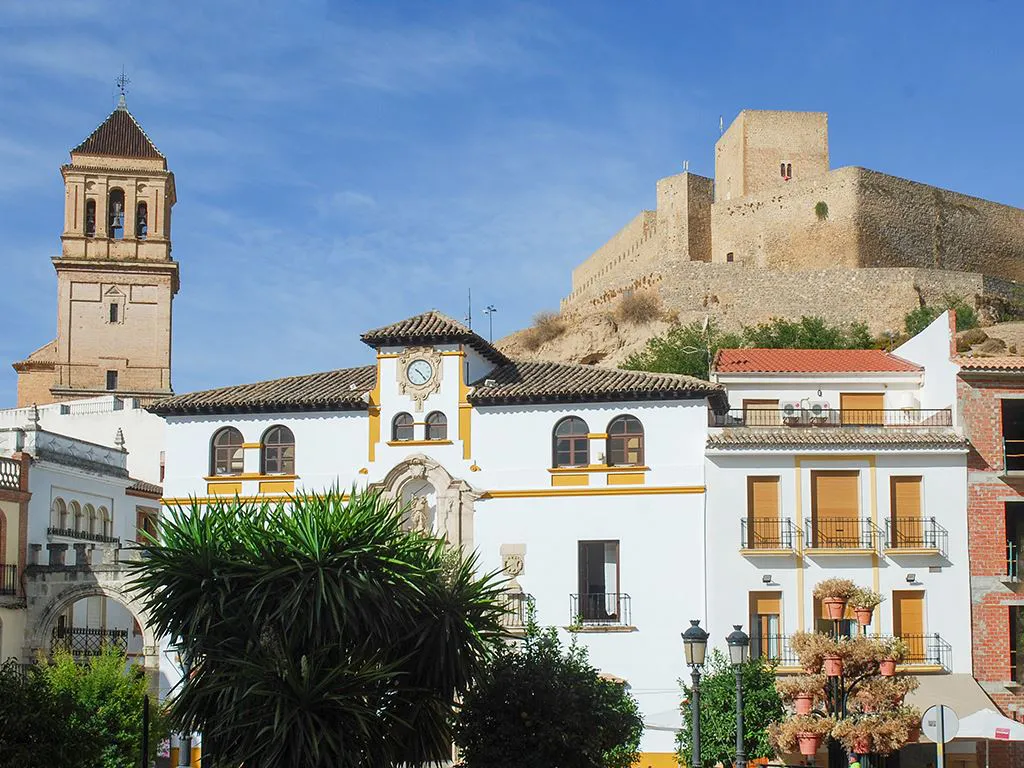
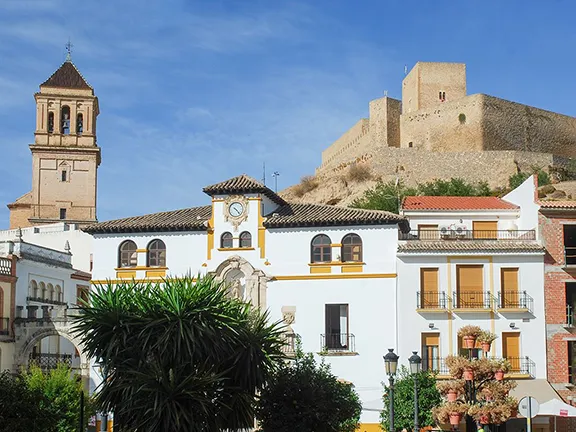
I was wandering around the square, clambering on walls and standing on benches, trying to take that one shot that captures the essence of the town, and not having any success until a young chap collared me and directed me to a set of narrow stairs in one corner of the square. ‘Escalera’ escalera’ he said, insistently. He was right, from part way up I had a great framed shot of the Ayuntamiento with the church and castle as a background. By the time I returned to the plaza to thank him, he had gone, so Senor, if you ever read this article, thank you.
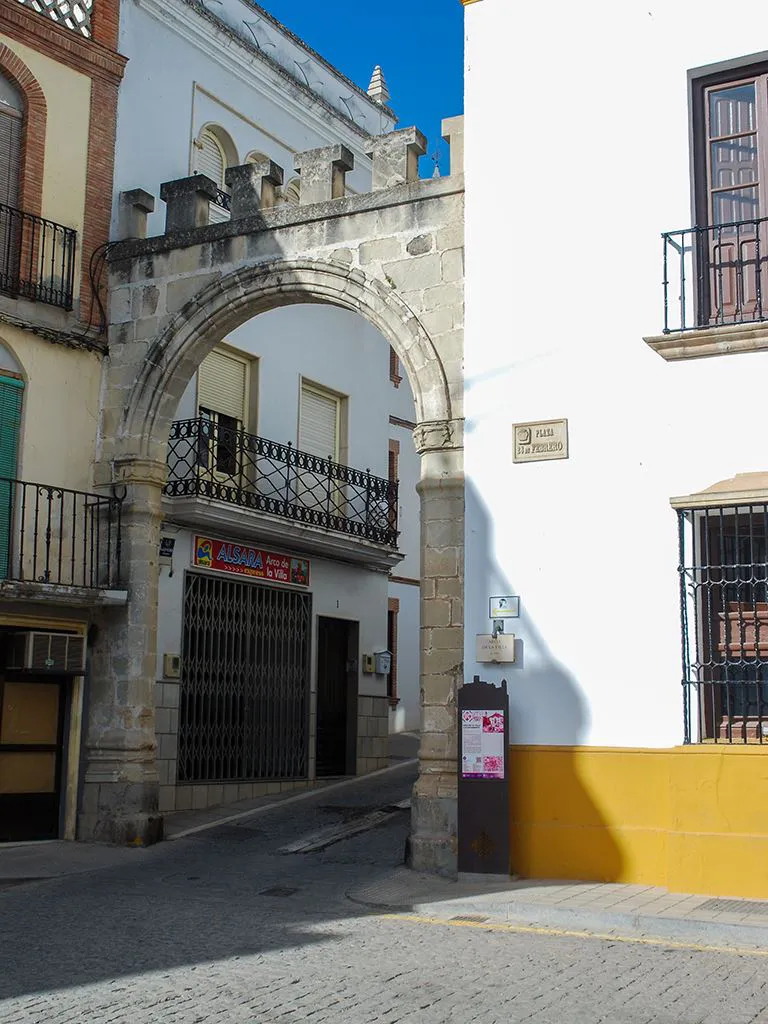
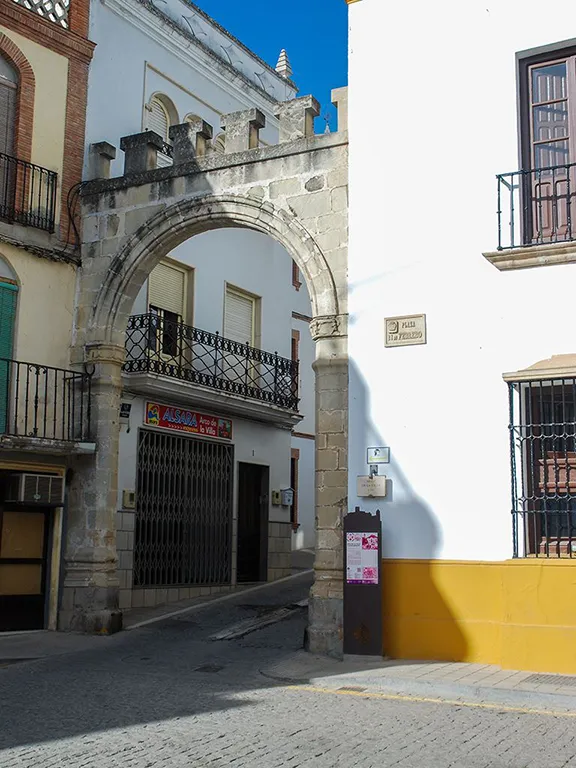
Arco de Villa Alcaudete
At the southwest corner of the Plaza Veintiocho de Febrero is a stone arch, the Arco de Villa, that looks as though it gives access to the old town through the outer wall of the Alcazar. In fact the current arch is somewhat more recent, probably 16th century, than the original that was a few metres further up Puerta de La Villa.
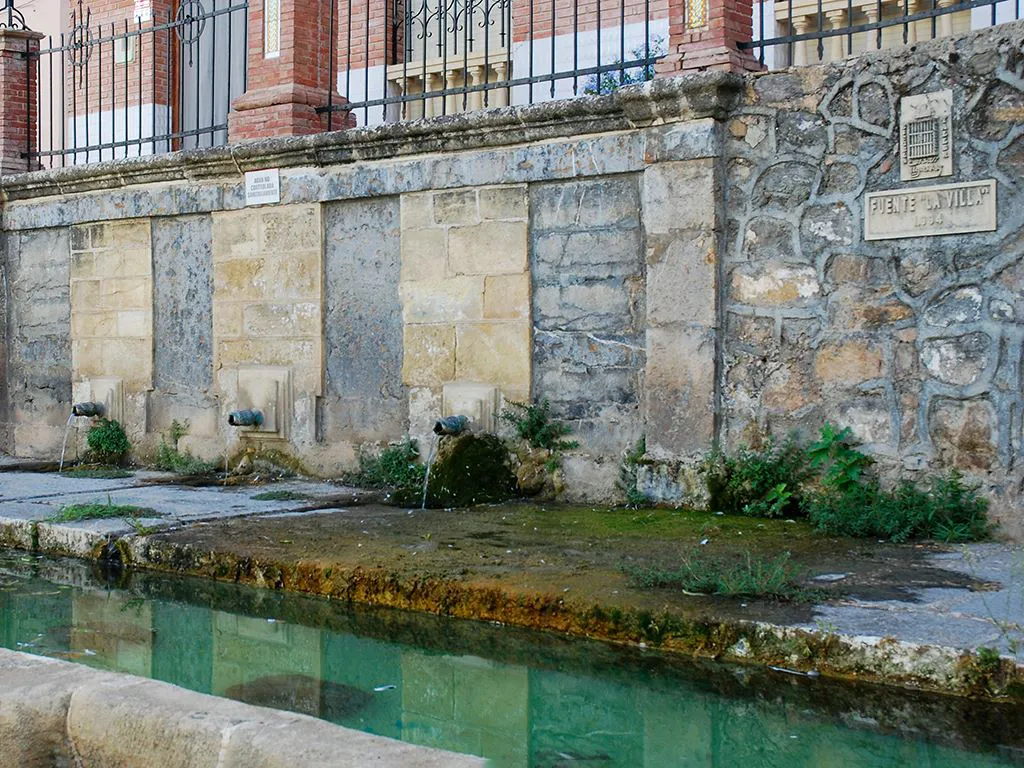
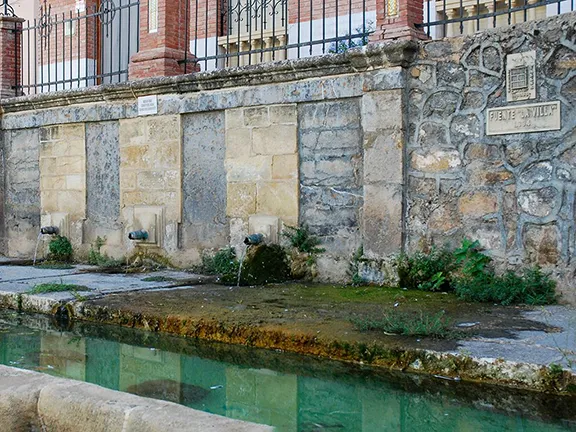
Fuente de la Villa Alcaudete
Alcaudete is blessed with a number of springs that emerge from the surrounding hills, another reason for its favoured location. The main spring, Fuente de la Villa, probably determined the present centre of the town. Originally, its waters supplied the El Carmen and Santa Clara convents as well as the local inhabitants. The house behind the fountain covers the aqueduct that brings the water to the spouts. The Fuente was restored in 1775. Opposite the fountain is the aptly named Calle del Agua. During and after storms, the fountain overflows and the excess water cascades down the street.
At the junction of Calle Alcalde Fernando Tejero and Calle Fuente Zaide is a second fountain. This one has a gruesome legend attached to it. During the 14th century, the warden of the castle was one Don Fernando Alonso de Córdoba. He had three Muslim slaves. Don Fernando was enraptured by the beauty of one slave, Aixa. Unfortunately for Fernando, he had a competitor, another Muslim called Zaide. Aixa and Zaide escaped from the castle one market day but did not get far before being captured. Don Fernando had Zaide beheaded on the spot where the fountain now stands.
Returning to Plaza Veintiocho de Febrero, pass through the Arco de Villa. A few metres further is the oldest Mercado de Abastos in Jaen province. The market was originally just within the town gates. Its current façade is a sympathetic 20th century reproduction.
Dating back to 1590, Iglesia de la Encarnación is the last remaining part of the Carmalitas Convent. The convent was another victim of the ‘Spanish Confiscation’. The church is built in a late Renaissance style called Mannerism characterised by extreme sophistication, complexity, and novelty. Inside you will find works of art, images of Saint Elija attributed to Pedro de Mena and the Holy Burial by Jose de Mora.
The Convent and church of Santa Clara dates to 1499. Situated to the northwest of the castle the church is noteworthy for two reasons. It is the only church built entirely of stone in the whole of Jaen province and it still houses a congregation of nuns who live in the cloisters. It has an impressive Baroque façade flanked by Solomonic columns.